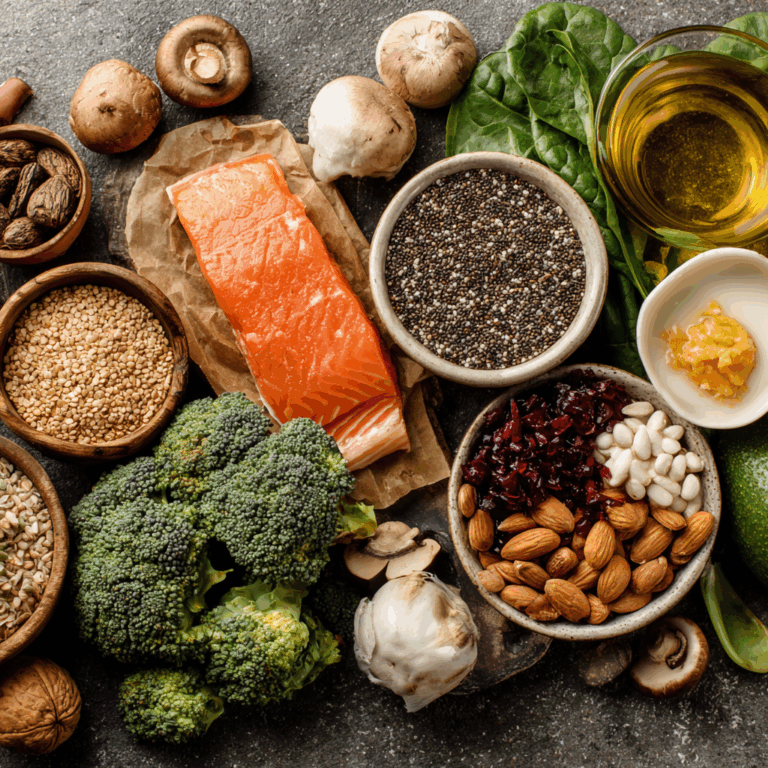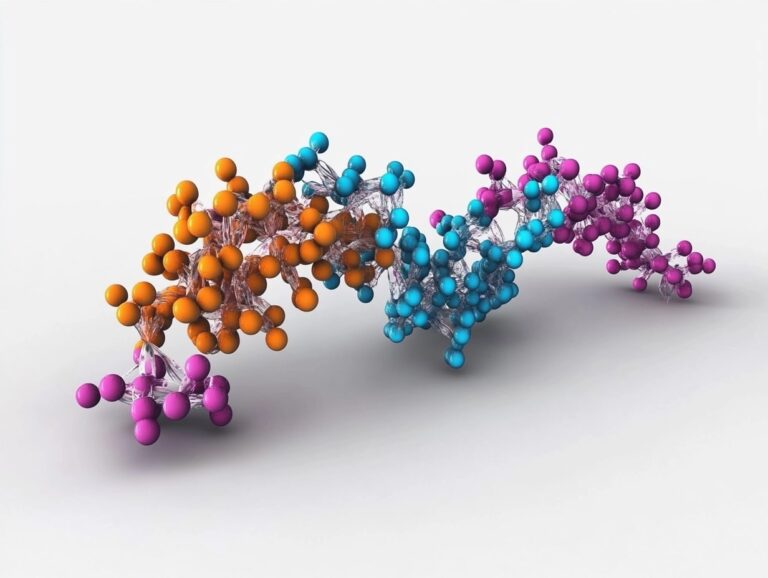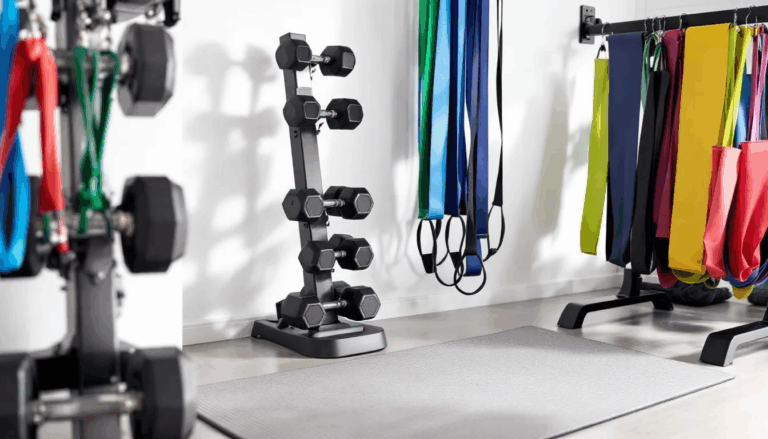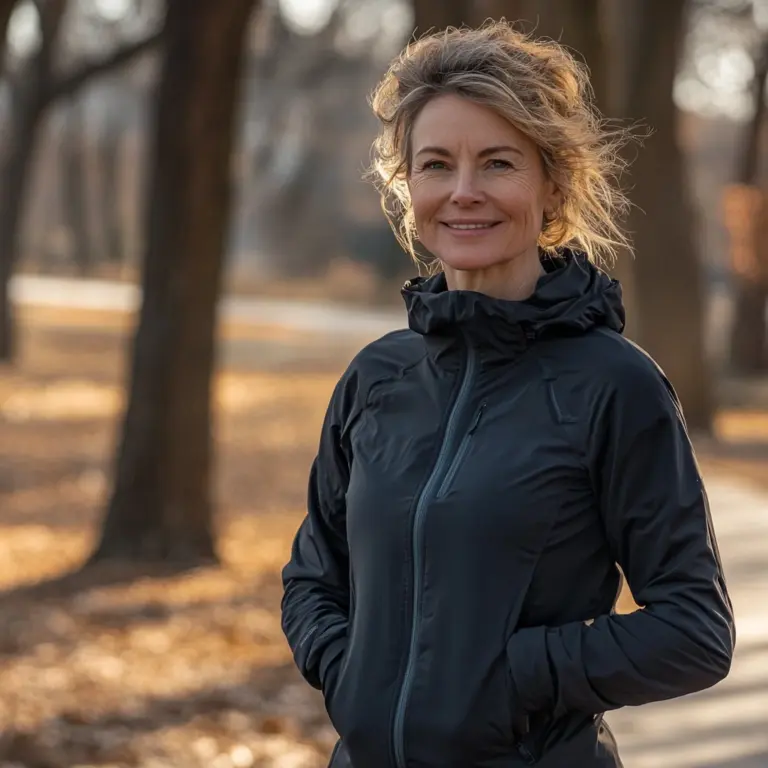Over 50 Fit: Best Exercises and Tips for Staying Active
Are you over 50 fit and looking to stay active?…
Are you over 50 fit and looking to stay active? This guide offers practical exercises and tips to help you stay healthy. Read on to find effective ways to maintain your fitness and improve your quality of life.
Key Takeaways
- Staying active after 50 is crucial for managing health, enhancing balance, and improving mental well-being, with regular exercise offering a path to a healthier, longer life.
- Incorporating a variety of exercises such as cardio, strength training, flexibility, and balance ensures a well-rounded fitness regimen that benefits the whole body and caters to the unique needs of older adults.
- Creating a structured weekly exercise plan, focusing on nutrition, and tracking progress are key steps to achieving fitness goals while maintaining motivation and accountability.
The Importance of Staying Active After 50
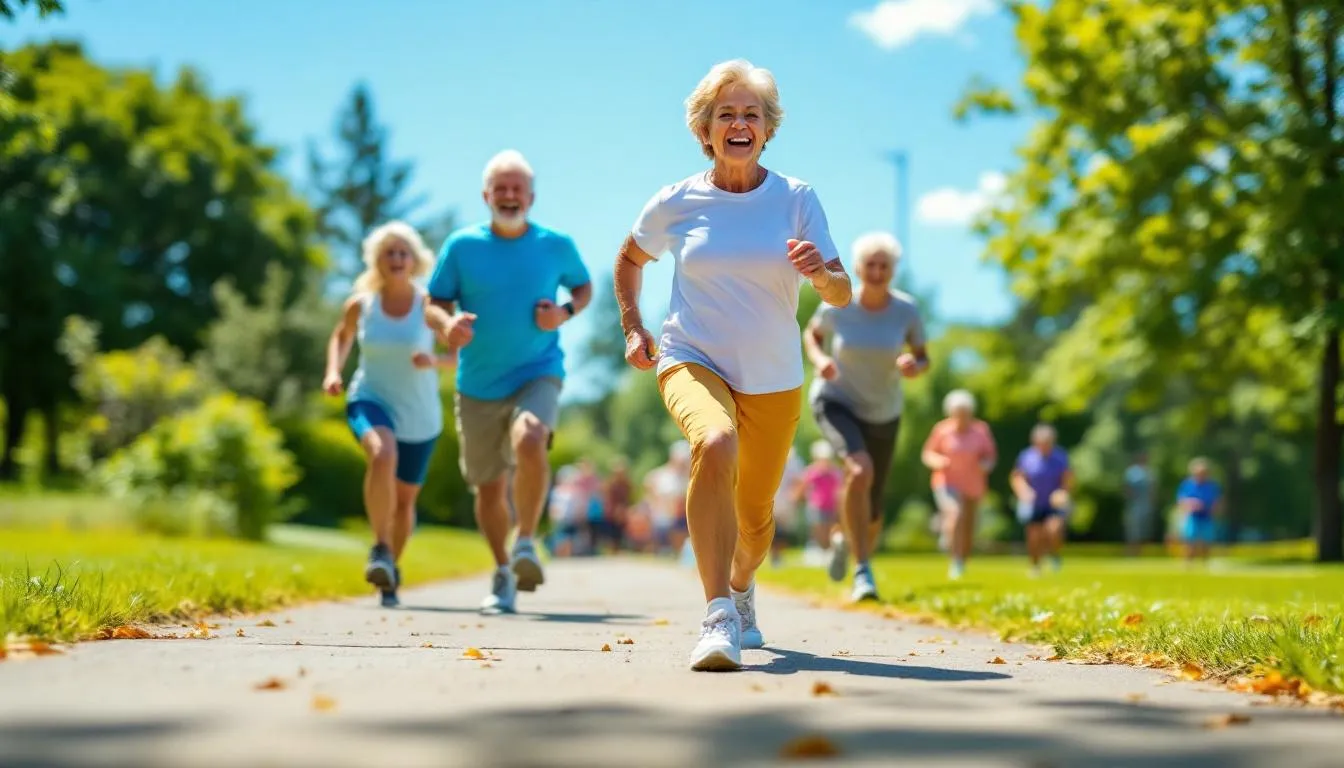
Remaining active as we age is vital for overall well-being. Physical fitness helps in:
- Managing blood pressure and reducing the risk of heart disease and stroke, which are common concerns as we grow older.
- Enhancing balance and coordination, significantly lowering the risk of falls among older adults.
- Improving sleep quality.
- Reducing anxiety and depression.
- Improving mental health. Engaging in activities like walking or strength training can lead to these benefits.
Moreover, staying active can:
- Help prevent chronic conditions such as osteoporosis and osteoarthritis, ensuring that our bones remain strong and healthy.
- Boost the immune system, making us more resilient to illnesses.
- Extend independent living and enhance quality of life by incorporating physical activity into daily routines.
The aging process doesn’t have to slow us down. Regular exercise contributes to live longer, healthier life. Activities like walking, for instance, not only lower the risk of heart disease and certain cancers but also boost overall energy levels and enhance mood. So, lace up your sneakers and let’s get movement toward a healthier, more active lifestyle!
Types of Exercise for Over 50s
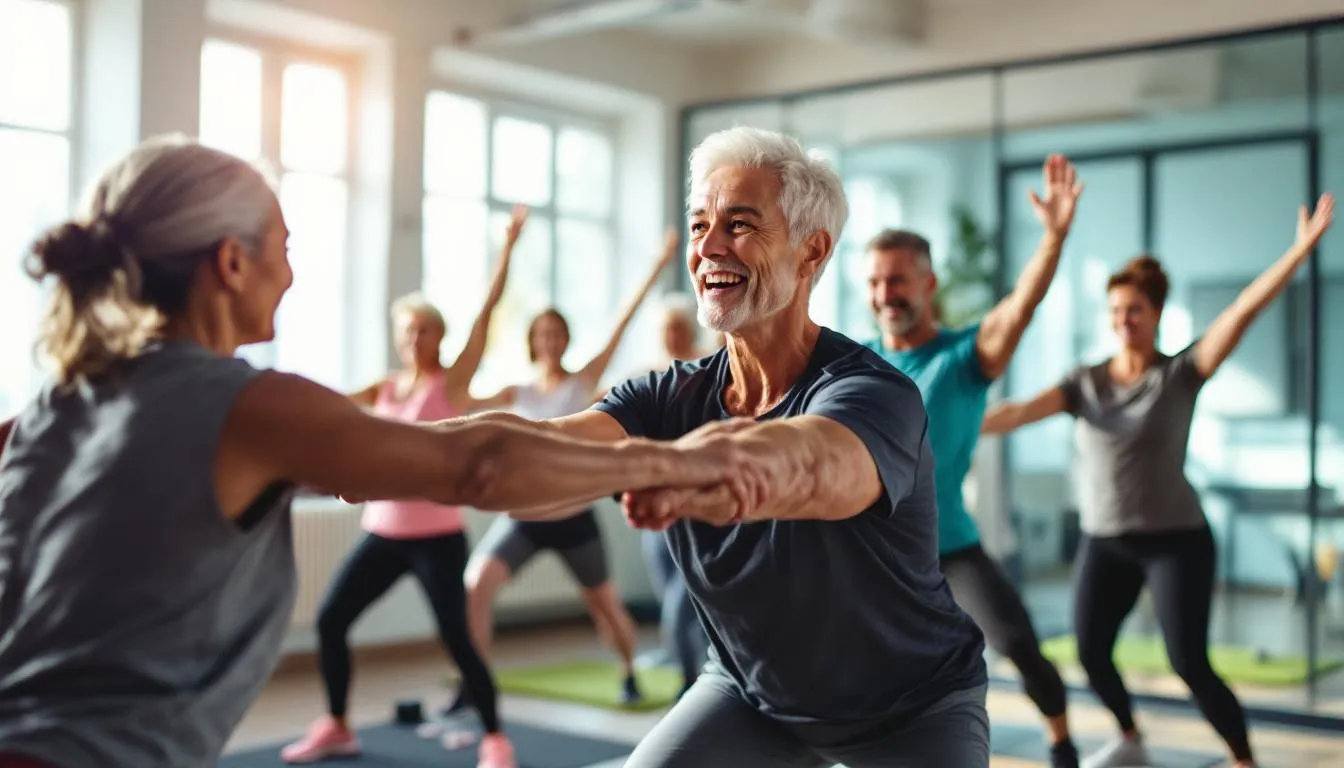
Maintaining optimal fitness involves incorporating various exercises into your routine. Beneficial exercise types for those over 50 include:
- Cardio
- Strength training
- Flexibility
- Balance Each type of exercise offers unique benefits that contribute to overall well-being and physical fitness.
Cardio workouts, such as brisk walking or cycling, improve heart health and enhance circulation. Strength training is crucial for combating muscle loss and improving daily activities.
Flexibility exercises like yoga and meditation enhance joint range of motion and reduce stiffness, while balance exercises such as tai chi help prevent falls and improve coordination. Participating in a combination of these exercises ensures a well-rounded fitness regimen that caters to the diverse needs of older adults, and maintaining the correct position during tai chi is especially important for maximizing balance improvement.
Walking: A Simple Start
Walking is a fantastic starting point for your fitness journey. This simple, effective exercise builds stamina, strengthens lower body muscles, and combats bone diseases. Engaging in moderate aerobic activities, such as brisk walking, for a total of 150 to 300 minutes weekly can significantly enhance your physical fitness. The beauty of walking lies in its versatility; it can be done solo or with friends, making it easy to incorporate into your daily routine.
Consistently meeting your walking goals promotes a healthy lifestyle and improves overall well-being for the entire family. A leisurely stroll in the park or joining a walking group can set a strong foundation for more vigorous activities.
Strength Training Essentials
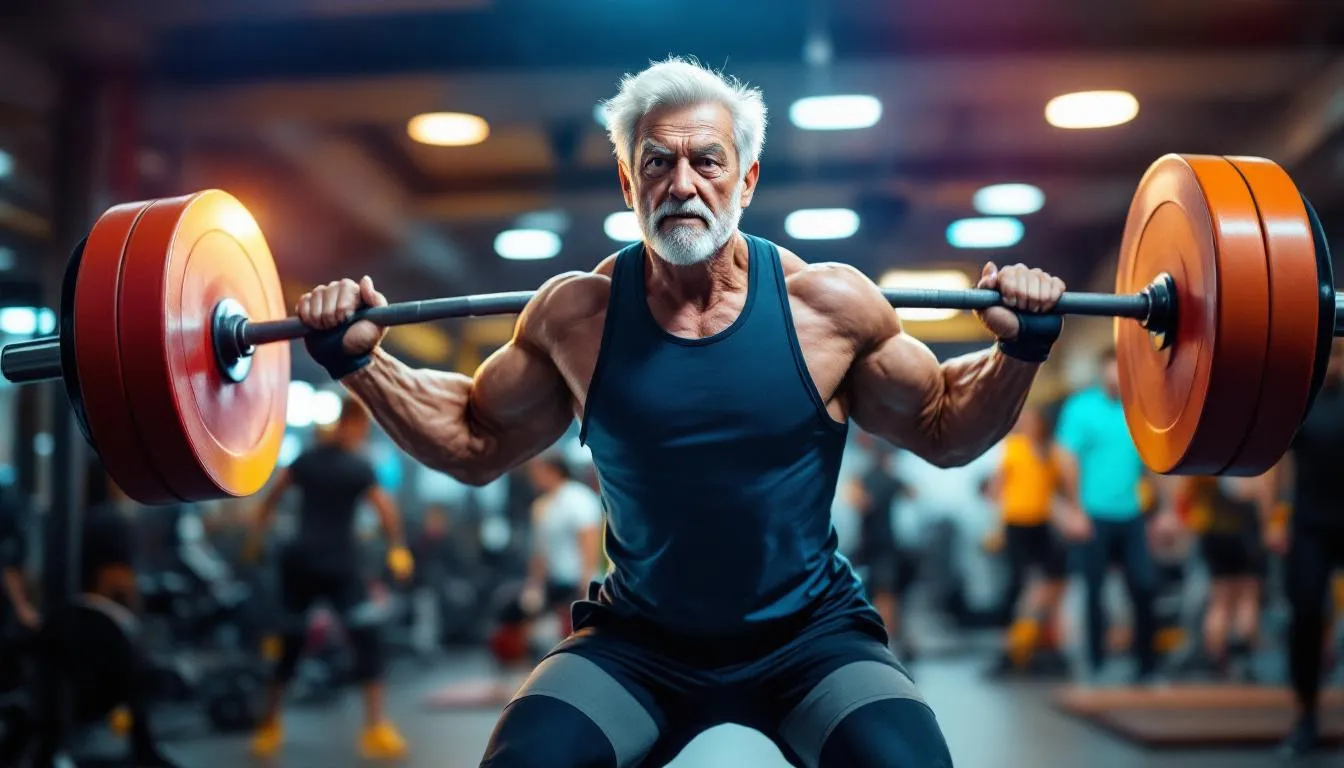
For individuals over 50, strength training helps combat muscle loss, a key reason behind decreased energy levels. Strength training makes you feel stronger, more energized, and capable of daily activities like carrying groceries and climbing stairs. It’s important to target major muscle groups with strength training exercises at least twice a week for optimal results. Including shoulder exercises, such as shoulder presses, helps build balanced upper body strength.
Beginners should:
- Start with light weights to find an appropriate challenge and minimize injury risk, and gradually increase the weight over time for continued progress.
- Master basic movements before advancing to free weights to ensure a solid foundation and reduce accidents. Learn proper pull techniques, such as rows or lat pull-downs, to engage the back and arm muscles effectively.
- Participate in two or three strength training workouts a week to see noticeable fitness improvements and lift weights effectively.
Using resistance bands at home is an effective way to build strength safely without heavy weights. Lunges are also an effective lower body exercise to target the legs and glutes.
Consistency and proper technique are key, whether working out at the gym or at home. Consider joining strength training classes or working with a certified trainer to ensure you’re on the right track and making the most of your workouts.
Low-Impact Cardio Options
For improving heart health without stressing the joints, low-impact cardio exercises are ideal. Swimming, for example, offers a full-body workout that builds muscles and bones, burns calories, and works the heart, all while being gentle on the joints. Similarly, cycling is excellent for stiff or sore joints, builds leg and hip muscles, strengthens bones, and improves blood circulation.
These exercises can be done in small spaces, making them convenient for home workouts. Using both arms and legs during these exercises can increase calorie burn and maintain energy levels throughout the day. Incorporating low-impact cardio into your routine ensures you stay active and healthy without risking injury.
Flexibility and Balance Exercises
Flexibility and balance exercises are vital for maintaining physical fitness as we age. Yoga or tai chi improves flexibility, balance, and mental focus. Yoga strengthens muscles, stretches ligaments, lowers heart rate, reduces blood pressure, and alleviates anxiety and depression. Tai Chi, on the other hand, improves balance, bone health, heart health, reduces arthritis pain and stiffness, and enhances sleep.
Stretching regularly enhances joint range of motion, facilitating smoother everyday movements. Paying attention to stretching and strengthening the hips is especially important, as it improves mobility and reduces the risk of injury during exercise. Consistent stretch routines can help relieve muscle and joint stiffness, especially beneficial for individuals suffering from arthritis.
Incorporating these exercises into your routine can significantly enhance your physical capabilities and overall well-being.
Fun Activities to Stay Fit
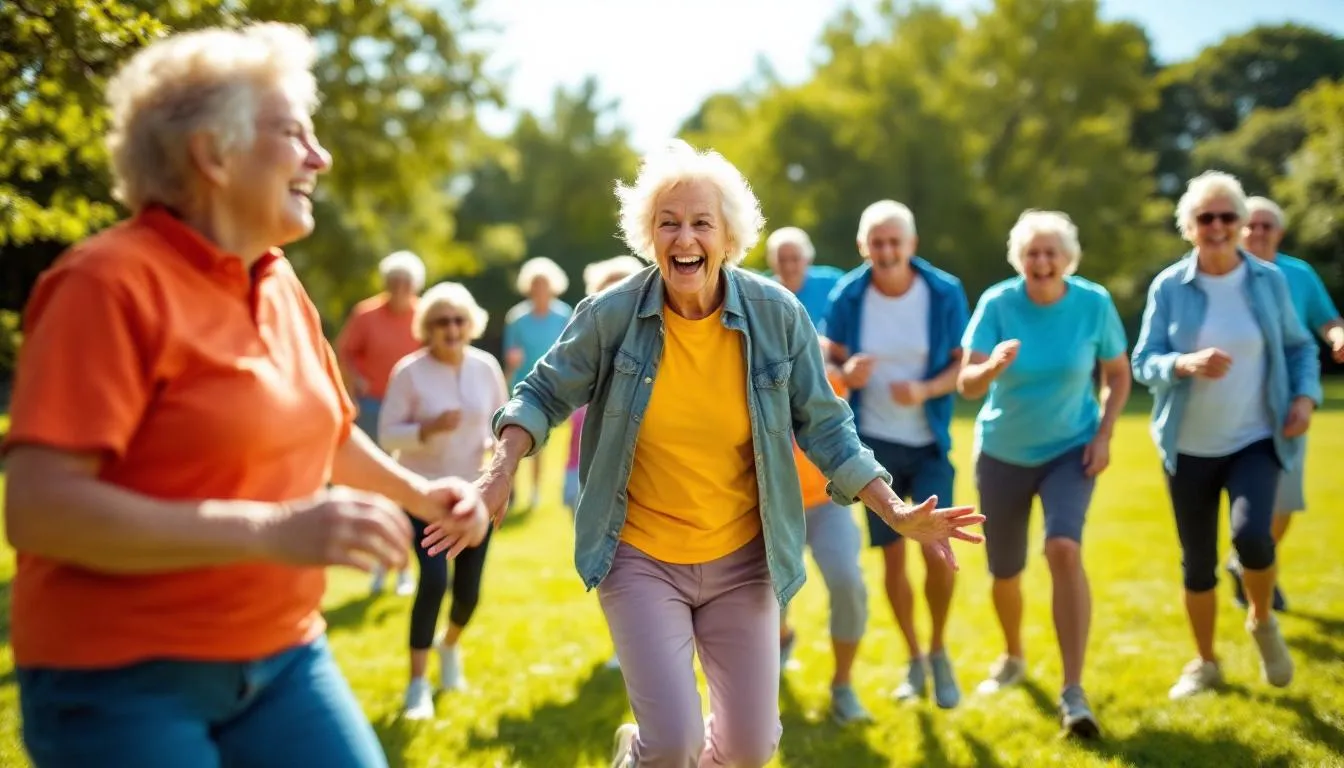
Fitness routines don’t have to be monotonous. Fun activities can make fitness routines more enjoyable and sustainable. Dancing is a fantastic low-impact cardio option that helps in burning calories while having fun. Line dancing, in particular, is a coordinated group activity that promotes physical activity and social interaction for all ages, including older adults. Sports like tennis, pickleball, and cycling provide full-body workouts and raise the heart rate.
Variety is crucial for maintaining interest in fitness routines. Engaging in a variety of physical activities reduces monotony and can encourage continued participation in fitness routines. Building social support through group activities or exercise buddies can significantly enhance motivation and enjoyment in fitness.
Creating a Weekly Exercise Plan
A balanced weekly exercise plan is vital for achieving and maintaining fitness goals. Here are some key recommendations:
- Aim for at least 150 minutes of moderate cardio activity per week if you are in good health.
- This amount is important for maintaining overall fitness.
- If you haven’t been exercising for a while, start with 10 minutes and gradually increase your activity.
Include both strength and cardio exercises in your weekly routine for a balanced workout. Perform core exercises at the end of the workout for optimal energy levels during strength training. Gradually increase the intensity of cardio workouts by adding 1-2 minutes each week as endurance stamina improves.
Guidance from a certified trainer ensures proper technique and safety. With a well-structured plan, you can confidently embark on your fitness journey.
Nutrition Tips for Fitness Over 50

Nutrition is a cornerstone of physical fitness, especially for those over 50. What you eat and the quality of the food you choose play a vital role in overall wellness. Key nutrients and dietary components important for maintaining health and bone density include:
- Vitamin B12
- Calcium
- Potassium
- A diet rich in fruits, vegetables, protein, dairy, and whole grains
These support overall wellness and meet nutritional needs.
Reading nutrition labels can help make informed choices, particularly in reducing fat, sugar, and sodium intake, and in selecting high-quality food to support a healthy lifestyle. Staying hydrated is crucial, as older adults are more susceptible to dehydration due to various medications.
Adequate protein and carbohydrates are essential for effective post-workout recovery. By focusing on nutrition, you can enhance your fitness journey and live a healthier life.
Injury Prevention for Active Adults
Staying active is essential for physical fitness and overall well-being, but as we age, injury prevention becomes even more important. Our bodies naturally experience changes like decreased bone density and reduced flexibility, which can affect our fitness levels and increase the risk of injuries. To keep your fitness journey safe and enjoyable, it’s wise to consult with your family doctor or a sports medicine specialist before starting new exercises or making significant changes to your workout routine. They can help you identify any pre-existing conditions and offer guidance on how to modify exercises to protect your joints and muscles.
Incorporating strength training and cardio into your weekly routine not only helps build strength and endurance but also supports healthy bones and joints. Always warm up before workouts and cool down with gentle stretches to maintain flexibility and reduce muscle strain. Listen to your body—if you notice pain or discomfort, take a break and seek advice from a medical professional. By prioritizing injury prevention and using your knowledge to make smart choices, you can continue to enjoy your favourite activities, support your family’s healthy lifestyle, and live your best life for years to come.
Exercise and Chronic Diseases: What You Need to Know
Regular exercise is a powerful tool in managing and preventing chronic diseases that often accompany the aging process, such as high blood pressure, diabetes, and heart disease. Embracing a healthy lifestyle that includes consistent physical activity can help lower blood pressure, improve heart health, and reduce the risk of developing serious illnesses. Strength training and lifting weights are especially beneficial for maintaining muscle mass and bone density, both of which are crucial for overall well-being as we age.
No matter your current fitness levels, incorporating a mix of cardio and strength training exercises into your routine can make a significant difference in your health. These workouts not only help manage existing conditions but also support a healthier, more active life. Before starting a new exercise program, it’s important to consult with your doctor or a certified trainer to create a plan tailored to your needs and abilities. With the right approach, you can enjoy the many benefits of exercise, improve your quality of life, and continue to thrive at any age.
Mental Health Benefits of Staying Active
Physical fitness isn’t just about the body—it’s also a key factor in supporting mental health and overall well-being. Regular exercise has been shown to reduce stress, anxiety, and depression, helping you feel more balanced and positive in your daily life. Activities like yoga, meditation, and group fitness classes can be especially effective for promoting relaxation, mindfulness, and emotional resilience.
Staying active also boosts brain health by improving focus, memory, and cognitive function, which are important as we age. Whether you prefer a brisk walk, a gentle stretch, or a fun class with friends, finding exercises that you enjoy can make a big difference in your mental outlook.
Building Your Fitness Community
One of the best ways to stay motivated and inspired on your fitness journey is to build a supportive fitness community. Connecting with others who share your passion for health and physical activity can make workouts more enjoyable and help you stay on track with your goals. Whether you join a local gym, sign up for group classes, or participate in online fitness groups, being part of a community provides encouragement, accountability, and a sense of belonging.
Having a workout buddy or working with a personal trainer can offer valuable support, guidance, and feedback as you progress. Sharing your achievements and challenges with others can boost your confidence and keep you motivated to continue your training. No matter where you are in your fitness journey, surrounding yourself with a positive community can help you celebrate your successes and overcome obstacles, making your path to better health even more rewarding.
Overcoming Obstacles to Staying Active
Staying active as we age can come with its own set of challenges, from injuries and illnesses to dips in motivation. The key to overcoming these obstacles is to listen to your body and adapt your fitness routine as needed. If you experience pain or discomfort, don’t hesitate to rest and allow your body time to recover. Consulting with your doctor or a certified trainer can help you modify your workouts to suit your current fitness levels and health needs, ensuring you continue to reap the benefits of exercise safely.
Finding activities that you genuinely enjoy can make staying active feel less like a chore and more like a rewarding part of your life. Remember, progress is more important than perfection—celebrate every small victory along the way. Even short bouts of physical activity can have a positive impact on your health and well-being. By staying flexible, seeking support when needed, and focusing on what feels good for your body, you can overcome challenges and keep moving forward on your fitness journey.
Injury Prevention for Active Adults
Staying active is essential for physical fitness and overall well-being, but as we age, injury prevention becomes even more important. Our bodies naturally experience changes like decreased bone density and reduced flexibility, which can affect our fitness levels and increase the risk of injuries. To keep your fitness journey safe and enjoyable, it’s wise to consult with your family doctor or a sports medicine specialist before starting new exercises or making significant changes to your workout routine. They can help you identify any pre-existing conditions and offer guidance on how to modify exercises to protect your joints and muscles.
Incorporating strength training and cardio into your weekly routine not only helps build strength and endurance but also supports healthy bones and joints. Always warm up before workouts and cool down with gentle stretches to maintain flexibility and reduce muscle strain. Listen to your body—if you notice pain or discomfort, take a break and seek advice from a medical professional. By prioritizing injury prevention and using your knowledge to make smart choices, you can continue to enjoy your favourite activities, support your family’s healthy lifestyle, and live your best life for years to come.
Exercise and Chronic Diseases: What You Need to Know
Regular exercise is a powerful tool in managing and preventing chronic diseases that often accompany the aging process, such as high blood pressure, diabetes, and heart disease. Embracing a healthy lifestyle that includes consistent physical activity can help lower blood pressure, improve heart health, and reduce the risk of developing serious illnesses. Strength training and lifting weights are especially beneficial for maintaining muscle mass and bone density, both of which are crucial for overall well-being as we age.
No matter your current fitness levels, incorporating a mix of cardio and strength training exercises into your routine can make a significant difference in your health. These workouts not only help manage existing conditions but also support a healthier, more active life. Before starting a new exercise program, it’s important to consult with your doctor or a certified trainer to create a plan tailored to your needs and abilities. With the right approach, you can enjoy the many benefits of exercise, improve your quality of life, and continue to thrive at any age.
Mental Health Benefits of Staying Active
Physical fitness isn’t just about the body—it’s also a key factor in supporting mental health and overall well-being. Regular exercise has been shown to reduce stress, anxiety, and depression, helping you feel more balanced and positive in your daily life. Activities like yoga, meditation, and group fitness classes can be especially effective for promoting relaxation, mindfulness, and emotional resilience.
Staying active also boosts brain health by improving focus, memory, and cognitive function, which are important as we age. Whether you prefer a brisk walk, a gentle stretch, or a fun class with friends, finding exercises that you enjoy can make a big difference in your mental outlook. By making movement a regular part of your routine, you’ll not only enhance your physical health but also nurture your mind, leading to a happier, more fulfilling life.
Overcoming Obstacles to Staying Active
Staying active as we age can come with its own set of challenges, from injuries and illnesses to dips in motivation. The key to overcoming these obstacles is to listen to your body and adapt your fitness routine as needed. If you experience pain or discomfort, don’t hesitate to rest and allow your body time to recover. Consulting with your doctor or a certified trainer can help you modify your workouts to suit your current fitness levels and health needs, ensuring you continue to reap the benefits of exercise safely.
Finding activities that you genuinely enjoy can make staying active feel less like a chore and more like a rewarding part of your life. Remember, progress is more important than perfection—celebrate every small victory along the way. Even short bouts of physical activity can have a positive impact on your health and well-being. By staying flexible, seeking support when needed, and focusing on what feels good for your body, you can overcome challenges and keep moving forward on your fitness journey.
Monitoring Your Progress
Tracking your progress keeps you motivated and helps achieve fitness goals. Regularly tracking physical activity helps:
- Monitor progress
- Boost motivation Celebrating small fitness victories:
- Reinforces positive behaviour
- Maintains motivation
Using wearable activity trackers can enhance physical activity levels by providing real-time feedback and motivation. These devices facilitate goal setting, which is crucial for motivating you to increase your physical activity. Older adults often prefer activity trackers that not only monitor physical activity but also offer additional features like heart rate monitoring.
The right tools and mindset help you stay on track to achieve your fitness goals.
When to Consult Your Doctor
Consult your doctor before starting a new exercise program or if experiencing certain symptoms to ensure safety. Persistent muscle or joint pain after exercise warrants a consultation with a doctor. It’s important to report any unusual symptoms like chest pain or dizziness to a healthcare professional promptly.
If symptoms such as balance issues or nausea occur during exercise, it’s advisable to seek medical advice. Before starting a new exercise program, consult your family doctor or a qualified fitness professional to ensure it’s safe for you.
Consult your doctor before starting a training regime if you have high blood pressure. Recognizing warning signs during exercise is crucial for preventing injuries and managing health issues.
Maintaining Motivation
Staying motivated is crucial for a successful fitness journey. Specific, achievable goals enhance motivation by allowing measurable progress. Improved balance and flexibility can enhance self-assurance in your physical capabilities, promoting an active lifestyle and improving fitness levels.
Engaging in activities or fitness classes with others provides social support, which can help maintain motivation and commitment to fitness routines. Good flexibility and balance contribute to improved posture, thereby alleviating muscle and joint strain.
Setting realistic goals and finding social support keeps you motivated and enhances your challenging fitness journey.
Rest and Recovery
Rest and recovery are vital components of any fitness regimen. Rest days aid recovery, prevent injuries, and support long-term fitness success. It’s suggested to allow one or two rest days between workout sessions to facilitate recovery.
Sleep aids recovery; during deep sleep, growth hormone is released to repair muscles. Active recovery, involving light activities like walking or stretching, enhances circulation and alleviates soreness.
Recovery tools like foam rollers and compression garments can help reduce soreness and improve recovery efficiency. Managing stress is important for recovery, as chronic stress hinders muscle repair and overall health. By prioritizing rest and recovery, you can ensure your body remains strong and healthy.


